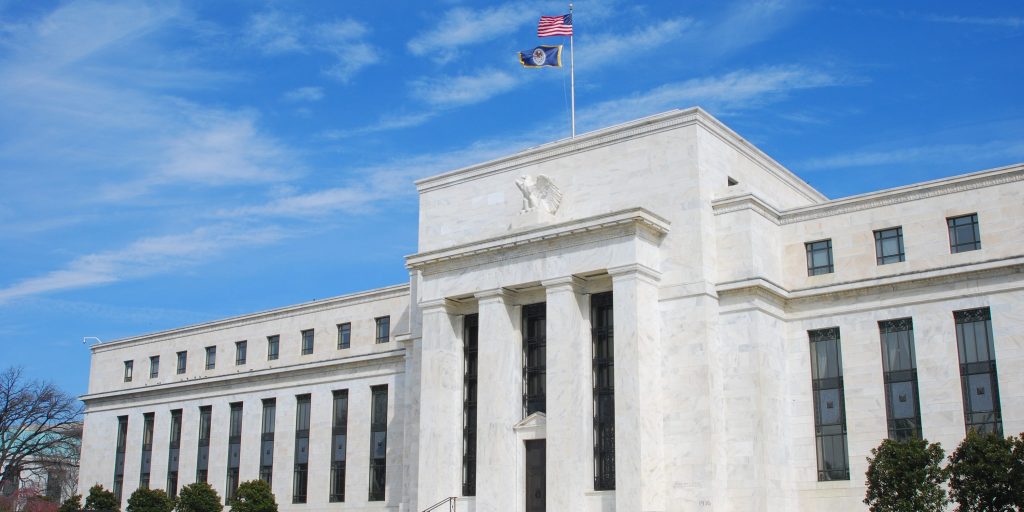- The May inflation report showed prices soaring at the fastest pace since 1981.
- The Fed will now have to act even more aggressively to slow that price surge.
- It could mean pricier borrowing, tumbling stocks, and a potential recession.
Friday's release showing inflation at a 41-year record in May dashed all hopes that rising prices had peaked in March.
It means the Federal Reserve is under more pressure than ever to rein in inflation by hiking interest rates, a practice that reverberates through almost every aspect of the average American's finances. The central bank has long been expected to raise rates at each of its next two meetings, with one coming up next week. Now it's facing calls to get even more aggressive.
The form that aggression could take is still up for debate, but one thing is clear: Inflation is getting worse at a time when it's already supposed to have peaked, and the Fed will have to be even more stringent if it's to solve the problem.
A tougher stance, however, is bad news for many of the elements that precede a recession, ranging from stock prices to mortgage rates and credit cards to car payments.
Investing is going to be a rollercoaster
Markets don't like uncertainty. A murky future breeds volatility, and investors prefer clear outlooks.
It's no wonder, then, that the Friday inflation report sparked a wave of selling on Wall Street. The higher-than-expected print confirmed many investors' biggest fear: that the Fed will have to slow the economy even faster if its to get a handle on inflation.
That process will begin in earnest on June 15, when the central bank reveals its latest policy move. Yet uncertainty around the path of inflation, future Fed actions, and whether policymakers will slow the economy too much will weigh on markets for months. Brokerage accounts and 401k balances are already well off their 2021 highs. As the Fed ramps up its efforts, stock moves will likely get even frothier.
Stocks also fare better when interest rates are low, as alternatives like Treasury bonds don't offer the same appeal in a low-rate environment. As the Fed takes action, many of the names that thrived when rates sat near zero will encounter new scrutiny.
Riskier assets could face an even larger plunge. Cryptocurrencies broadly declined on Friday as well, pulling valuations even further from their 2021 peaks. As investors prioritize safe-haven assets and brace for slower economic growth, they're likely to pull cash from crypto and other uncertain markets.
Mortgages, car loans, and credit card debt will get much more expensive
The Fed's benchmark rate affects borrowing costs throughout the economy. With inflation jumping to new highs, interest rates on all kinds of products are poised to soar.
For one, potential homebuyers hoping for a break will be out of luck. The housing market was practically inaccessible through much of the pandemic, as bidding wars and a nationwide inventory shortage boosted prices at a historic pace.
The Fed is set to cool that rally with its rate increases, but that doesn't mean homes will be affordable. The average rate on a 30-year fixed-rate mortgage is up more than 2 percentage points from the end of 2021. For potential buyers, that means financing a purchase will be much more expensive.
Car loans will show a similar trend. Since most vehicles are bought with financing plans, rate hikes will directly translate to pricier rates for auto purchases.
Even credit card debt will be harder to pay down. The average card rate sits at about 16.4%, and could rise to a new record high above 18%, according to Ted Rossman, senior industry analyst at Bankrate. Paying off a balance could then take longer and cost more in interest, especially for those only making minimum payments on their credit cards.
A recession grows more likely
Higher consumer costs are one thing, but the bigger fear in economic circles is that the Fed is stuck. Doing too little to counter inflation could allow price growth to accelerate further. Today's inflation could even become permanent if long-term inflation expectations swing higher.
Conversely, acting too aggressively could slow economic growth to a standstill. Demand could evaporate, leaving companies with diminished revenue. That would spark layoffs and quickly undo much of the pandemic-era recovery.
Fed Chair Jerome Powell has signaled the Fed will prioritize cooling inflation over the labor market's recovery. It is "essential" to bring inflation lower, and the Fed "can't allow inflation expectations to become un-anchored," Powell said in a May 4 press conference.
Whether the Fed can achieve a so-called "soft landing," in which inflation slows and unemployment remains low, has been the subject of intense debate for months. The May inflation reading, however, shrinks the target the Fed is trying to hit. The central bank must now hit the brakes on demand with even more force, and doing so comes with a fair amount of recession risk.
"The Fed's price stability resolve is going to be really tested now," Seema Shah, chief strategist at Principal Global Investors, said. "Policy rate hikes will need to relentlessly aggressive until inflation finally starts to fade, even if the economy is struggling."

